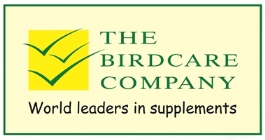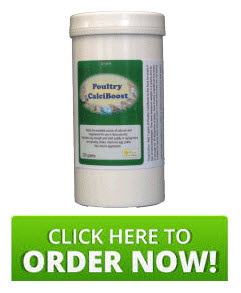Egg binding in poultry - the majority of cases have calcium at their root...

There are lots of old wives tales told about egg-binding in poultry. Whilst a few cases have medical causes, the majority of cases have calcium at their root. This article is intended to explain how calcium is involved in egg-binding and how proper calcium supplementation can prevent its occurrence, increase clutch sizes and improve hen health.
When a hen manufactures an egg, she draws calcium from her bones to make the eggshell. In a healthy, well-fed bird, the bones contain about three eggs worth of calcium. A number of problems can stop the bones from providing enough calcium to make the shell and when this happens, the hen has three options. In reality most birds will select a combination of these three:
1. Stop laying – calcium deficient hens lay smaller clutches. The reverse of this is that diets rich in bio-available calcium enable hens to lay larger clutches.
2. Produce thin or soft shelled eggs – these eggs cannot control their moisture content so most dehydrate and a few (in humid conditions) may water log. Whichever happens - they die!
3. Steal calcium from other organs – when this happens, the calcium is removed from nerves and muscles. These organs need calcium to work properly so when the calcium is removed, they stop working properly. The hen is partially paralysed and cannot expel the egg. This is egg-binding.
The traditional veterinary treatment for this problem is an injection of calcium. This works very well, however, it is expensive, invasive and risky. Oral treatment with a highly bio-available powdered calcium/magnesium/vitaminD3 supplement like Poultry CalciBoost, works equally effectively and is far cheaper and less stressful for the bird.
Old-fashioned remedies like applying oil to the vent and holding the bird over a hot kettle do not address the fundamental problem are risky and unreliable.
As usual, prevention is better than cure. This is achieved by addressing two factors:
1. Ensuring the bones are full of calcium – this simply involves a weekly dose of Poultry CalciBoost to all non-breeding birds.
2. Exercising the bones' ability to quickly pump calcium into the blood – the above regime ensures this is achieved as well. By feeding both high and low calcium levels in the diet, the bones are regularly forced to move calcium in both directions. This ensures that the hormonal functions involved in this process are working optimally.
Perversely, providing good quality calcium every day can actually have the reverse result to that you desire. If all the birds' maintenance calcium requirements are satisfied from the gut then the bones slowly lose the ability to quickly pump calcium back into the blood (simply because they have not need to do so for so long). Egg-binding can be a result of this over supplementation so we never use Poultry CalciBoost seven days a week.
When the hen starts to lay, she needs to replace the calcium removed from the bones so we increase the of Poultry CalciBoost administration to five days a week. This keeps the bones topped up. We continue this frequency until the chicks have reached full size.
It is easy to see why this technique increases clutch sizes, as the hen always has plenty of calcium and she is storing it and releasing it very efficiently. Remember that Poultry CalciBoost is designed to be used with other products such as Poultry Essentials, ProBoost SuperMax and a probiotic such as Potent Brew.

